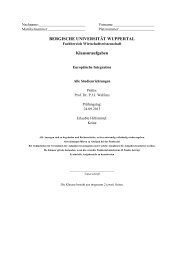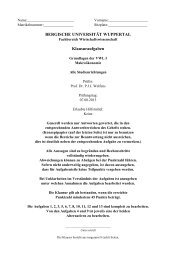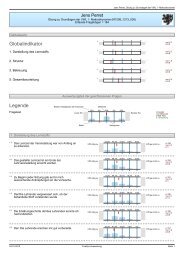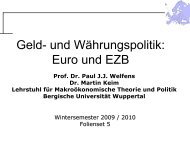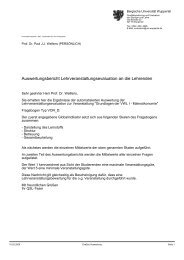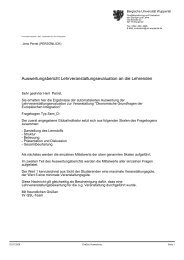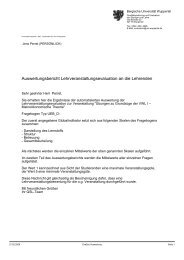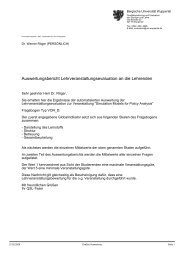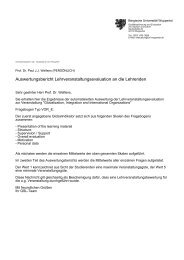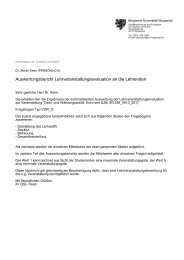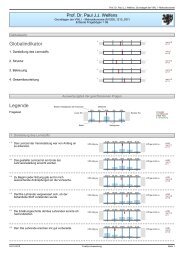UNIVERSITÄT POTSDAM - Prof. Dr. Paul JJ Welfens
UNIVERSITÄT POTSDAM - Prof. Dr. Paul JJ Welfens
UNIVERSITÄT POTSDAM - Prof. Dr. Paul JJ Welfens
You also want an ePaper? Increase the reach of your titles
YUMPU automatically turns print PDFs into web optimized ePapers that Google loves.
In the digital economy the inventory-output ratio is lower than in the traditional<br />
economy since computerization allows improved production planning and logistics. At<br />
the same time the digital economy consists to a considerable extent of digital services<br />
where the supply elasticity is obviously very high. In the case of services provided via<br />
the internet [e.g. software (application sharing services) or music] the supply elasticity<br />
is extremely high. This could contribute not only to higher growth in fields where demand<br />
follows a logistical expansion path over time but also could reduce the inflationary<br />
pressure for any given money supply growth; that is, in economic upswings the<br />
inflation rate will increase less than in the traditional economy. This seems to indeed<br />
have been the case in the 1990s. CREPON / HECKEL (2001) find that computer use<br />
and total factor productivity gains in the ICT sector have reduced the inflation rate by<br />
0.3 and 0.4 percentage points in the period 1987-1998, a considerable impact with respect<br />
to the average inflation rate of 1.4% in this period in France.<br />
JORGENSEN/STIROH (2000) have argued that US growth resurgence is partly<br />
related to an increasing use and production of ICT. OLINER / SICHEL (2000) have<br />
also concluded that the revival in US productivity growth is strongly related to information<br />
technology dynamics. About two-thirds of the rise in US labor productivity in<br />
1996-99 can be explained by an increasing use and production of information technology.<br />
This two-thirds can in turn be partly assigned to capital deepening and partly to<br />
higher total factor productivity growth. DAVERI (2001) argues that growth in EU<br />
countries is also partly an information technology story. The following table shows that<br />
IT capital accumulation can explain a considerable part of cross-country growth gaps.<br />
The shares of the growth gaps explained by IT capital is roughly 25-30% of the total<br />
for six EU countries (Germany, France, Italy, UK, Sweden, and Belgium), but this fraction<br />
is larger for Denmark (90%), and Greece, Spain, Portugal, the Netherlands, Austria<br />
and Finland (50-60%). As regards capital input, differences in the overall contributions<br />
of capital cannot explain much of the EU growth gap vis-à-vis the US. It is noteworthy<br />
that the growth gap observed in Italy, Germany, France, and Sweden vis-à-vis the US is<br />
largely explained by gaps in the contribution of labor. Following similar experiences in<br />
the 1960s, 1970s, and 1980s (DOUGHERTY / JORGENSEN, 1996), the growth contribution<br />
of labor was negative in many EU countries in the 1990s. As regards total<br />
factor productivity growth, several EU countries show higher TFP growth rates than<br />
the US. DAVERI (2001) emphasizes that while it is difficult to draw clear conclusions<br />
with respect to TFP given the residual character of this variable, the time variations of<br />
the TFP growth rates are interesting. The five largest countries in the EU had smaller<br />
TFP growth in 1996-99 than in the 1980s and the first part of the 1990s. However, TFP<br />
growth has increased in Portugal, Greece, Finland, and Ireland over time. This intra-EU<br />
difference is not fully understood, although BASSANINI / SCARPETTA / VISCO<br />
(2000) argues that the increase in TFP was relatively high in countries with flexible<br />
labor markets and less regulated product markets. However, Spain, the UK, and the<br />
18



